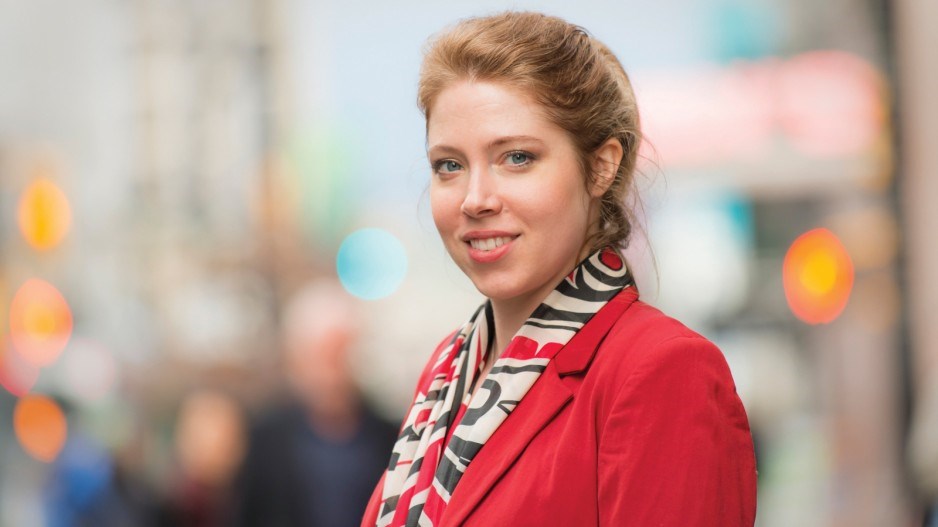Local university, business and community leaders are hoping Surrey’s large available industrial land base will benefit from the federal government’s recently announced national Innovation Agenda.
Six action items were outlined in the plan, titled Building an Inclusive and Innovative Canada, though the strategy details no infrastructure commitments. The agenda also noted Canada’s business expenditures on research and development have declined steadily for more than 10 years, to the point where Canada ranks 22nd among 34 Organisation for Economic Co-operation and Development countries.
Navdeep Bains, the minister of Innovation, Science and Economic Development, recently hand-picked 10 people from across Canada to help shape the agenda. The only one chosen from B.C.’s university community is Sarah Lubik, Simon Fraser University’s director of entrepreneurship, who said Surrey’s available land base puts it at the front of the pack.
“There is an opportunity for Surrey because they have that land,” Lubik said. “And an ability to offer the kind of premises that people can grow into and also stay easily. So I think that’s probably an opportunity for Surrey because not every municipality has room to grow and retain companies as they grow.”
At 317 square kilometres, Surrey is Metro Vancouver’s largest city and has 46% of the region’s vacant industrial land.
Lubik noted Surrey faces obstacles of co-ordination because the city has eight designated business parks and undeveloped industrial land across four separate communities, including Whalley, Newton, Guildford and Cloverdale.
“One of the challenges will be co-ordination because Surrey is a very big place,” Lubik said. “There are a lot of people who are doing narrow initiatives, and if we don’t get together in a concerted effort, you’re going to have small pockets of resources … trying to solve the same problems.”
Lubik, who spoke to Business in Vancouver while attending Waterloo, Ontario’s Innovation Summit, added that a competitive mindset is great when it comes to developing innovation projects and subsequent infrastructure, but Canada’s various technology hubs need to make sure they aren’t getting caught up in a race-like mentality that compels them to compete at each other’s expense.
“Are we going to compete to solve the problem or are we going to get together and work together and solve the problem faster?”
Surrey’s land is starting to diminish now as the city fills out. Multiple major commercial and industrial infrastructure projects are in the works, including 3 Civic Plaza at City Centre and Campbell Heights North (a 250-acre business park) and Campbell Heights East, which is in its planning phase).
From 2009 to 2013, the amount of available designated industrial land in the city stayed relatively constant, but it dropped from 4,750 acres in 2013 to 2,441 in 2014.
The amount of vacant industrial land also declined drastically over the same period of time: to 565 acres from 1,376 acres.
According to the City of Surrey’s 2013 Official Community Plan, one of its key strategies is to protect the supply of industrial land.
“Industrial areas are often under pressure to accommodate non-industrial uses, including big-box retail, residential or stand-alone offices, as initial land prices in industrial areas tend to be cheaper than areas designated for commercial or residential uses,” the report noted.
Mayor Linda Hepner, reflecting on the city’s clean technology initiatives, said the available industrial land base within Surrey also has its own advantages compared with other areas of Metro Vancouver. She noted something as simple as geography can play heavily into a company’s decision to set up shop.
“Most clean technology companies rely heavily on the U.S. as their first export market for technology as well as for investment,” Hepner said. “Being right next to the U.S. border allows for our clean tech companies to do more sophisticated business deals south of the border.”
Coun. Bruce Hayne, who chairs the Investment and Innovation Committee that oversees the city’s economic development strategies, including Innovation Boulevard and the clean tech sector, noted four sectors the city is looking to key on: medical technology, clean technology, a creative economy and agricultural innovation.
He added that the city’s youthful demographic – 30% of the population is under the age of 20 – could also help fill those future job vacancies as innovation projects move into the area. Surrey was also designated the second metropolitan core in the recently released Metro Vancouver 2040: Shaping our Future regional growth strategy report.
“As such,” Hayne said, “we are the city of the future in the region with the most developable industrial land base, the most population growth, with the most diverse and youthful population.”




